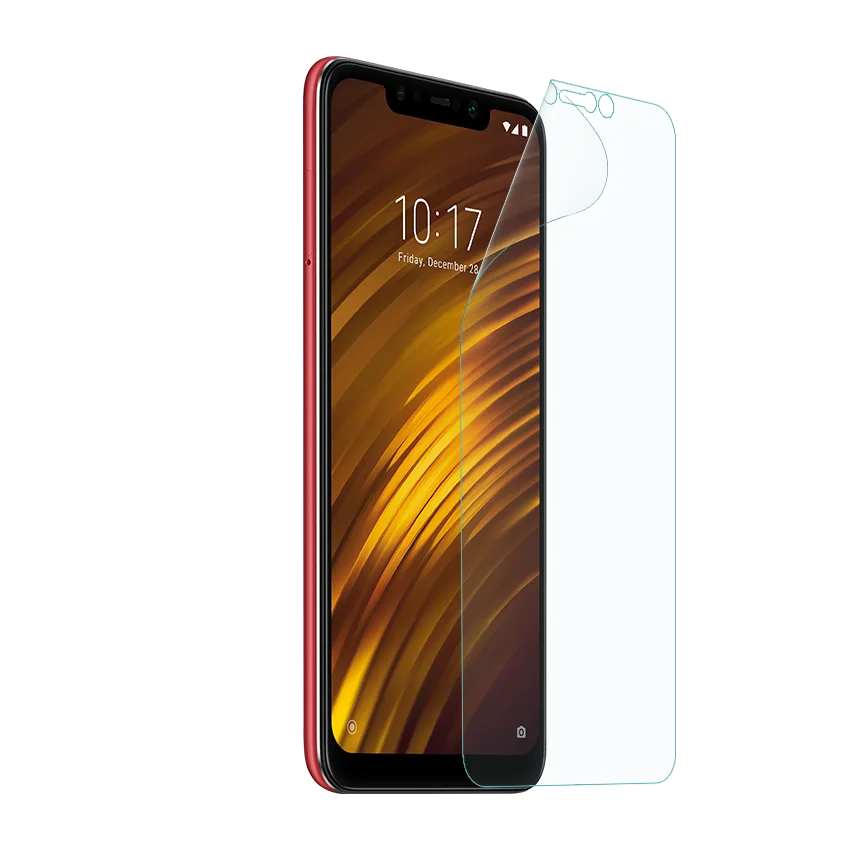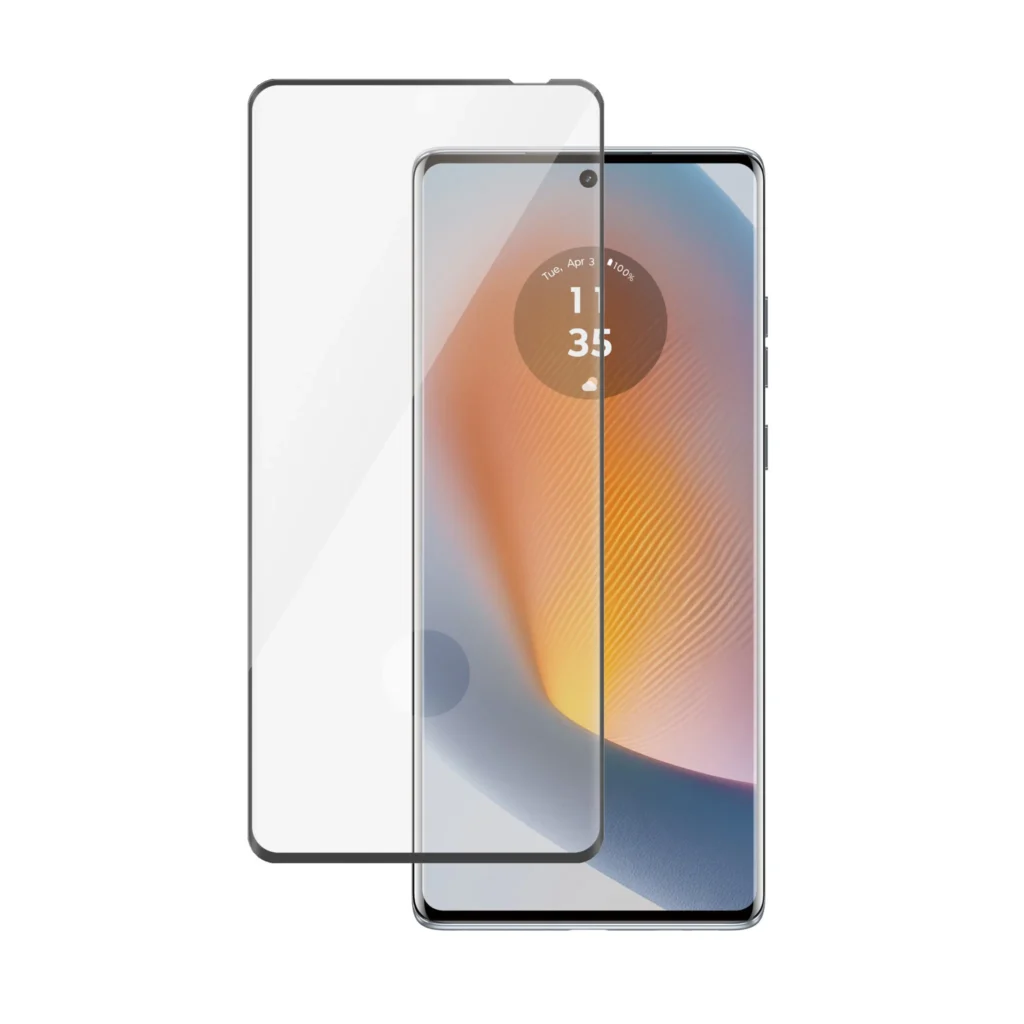Screen Guard vs Tempered Glass: Which is the Best for Your Device?
Introduction: Why Your Phone Needs Protection
Your smartphone is your lifeline—whether you’re navigating Delhi’s crowded metros, working from a Mumbai cafe, or streaming movies during a rainy evening in Chennai. But a single drop on a tiled floor or a scratch from keys in your bag can lead to a cracked screen, costing ₹10,000–₹50,000 to repair. At ScreenGuardian, we’ve spent over a decade crafting mobile screen guards and tempered glass screen protectors to keep your device safe in India’s tough conditions—dusty streets, humid monsoons, and busy commutes. In this guide, we dive into the debate of screen guard vs tempered glass, sharing our experience to help you choose the best screen protector for your mobile. From technical insights to real-world testing, we’ll answer which is better: screen guard or tempered glass and why ScreenGuardian’s protectors are trusted by over 1 million Indians. Let’s get started!


What Are Screen Guards and Tempered Glass?
Before comparing screen guard vs tempered glass, let’s clarify what each term means based on our expertise at ScreenGuardian.
Screen Guards (Plastic Film Protectors)
- What They Are: Thin layers of PET (polyethylene terephthalate) or TPU (thermoplastic polyurethane) film applied to a phone’s screen.
- Key Features: Lightweight, flexible, budget-friendly (₹499–₹799).
- Protection Level: Basic scratch resistance, minimal impact protection.
- Best For: Budget phones (e.g., Realme Narzo, Vivo Y-series) or users needing temporary protection.
- ScreenGuardian Example: Samsung A14 Film Protector – ₹499, with self-healing technology for minor scratches.
Our Experience: We’ve tested film protectors in dusty Delhi markets, where they effectively shield against sand and keys but offer limited drop protection. They’re ideal for light users who prioritize affordability.
Tempered Glass Screen Protectors
- What They Are: Chemically strengthened glass with 9H hardness, designed to absorb impact and resist scratches.
- Key Features: High durability, crystal-clear display, smooth touch sensitivity, oleophobic coating (₹799–₹1,999).
- Protection Level: Superior scratch and impact resistance, protects against drops up to 2 meters.
- Best For: Premium phones (e.g., iPhone 16, Samsung Galaxy S24, Xiaomi 14).
- ScreenGuardian Example: iPhone 16 Pro Tempered Glass – ₹999, with edge-to-edge coverage and anti-fingerprint coating.
Our Experience: Our drop tests in Mumbai simulate real-world accidents (e.g., phones falling from pockets). Tempered glass consistently outperforms film, often cracking to save the phone’s screen.
Screen Guard vs Tempered Glass: A Detailed Comparison
To help you decide which is better: screen guard or tempered glass, we’ve compared the two based on ScreenGuardian’s rigorous testing and customer feedback from India.
1. Protection Level
- Screen Guard: Offers basic scratch protection against keys, coins, or sand. However, it’s too thin (0.1–0.2mm) to absorb significant impact from drops. In our tests, film protectors failed to prevent cracks during 1-meter drops.
- Tempered Glass: With 9H hardness (comparable to sapphire), tempered glass resists deep scratches and absorbs impact. Our tests show it protects screens during drops from 1.5–2 meters, often sacrificing itself to save the phone.
- Winner: Tempered glass for superior protection, especially in India’s accident-prone environments (e.g., crowded buses).
2. Durability
- Screen Guard: Prone to scratches and wear over time, especially in dusty cities like Ahmedabad. TPU films with self-healing tech can repair minor scratches, but they degrade faster (6–12 months).
- Tempered Glass: Highly durable, resisting scratches from sharp objects like keys or sand. Our tempered glass for mobile lasts 12–24 months with proper care, even in humid monsoons.
- Winner: Tempered glass for long-term durability.
3. Clarity and Touch Sensitivity
- Screen Guard: Offers decent clarity but may yellow or peel over time, affecting display quality. Some films slightly reduce touch sensitivity, noticeable on high-refresh-rate screens (e.g., 120Hz).
- Tempered Glass: Provides 99.9% transparency, maintaining your phone’s vibrant display (e.g., AMOLED on Samsung S24). Our oleophobic coatings ensure smooth, responsive touch, even on iPhone 16’s 120Hz screen.
- Winner: Tempered glass for better clarity and touch experience.
4. Installation and Maintenance
- Screen Guard: Flexible and easy to apply, but prone to bubbles if not aligned properly. Dust in cities like Delhi can complicate installation. Maintenance is simple—replace when scratched.
- Tempered Glass: Requires precise alignment but easier with ScreenGuardian’s alignment frames. Our kits include cleaning wipes and dust removers for bubble-free application. If cracked, replacement is straightforward under our lifetime warranty.
- Winner: Tie—both are manageable with ScreenGuardian’s installation kits.
5. Cost and Value
- Screen Guard: Affordable (₹499–₹799), ideal for budget-conscious users. However, frequent replacements (every 6–12 months) can add up.
- Tempered Glass: Higher upfront cost (₹799–₹1,999) but better value due to longer lifespan and superior protection. ScreenGuardian’s lifetime warranty reduces long-term costs.
- Winner: Tempered glass for better value, especially for premium phones.
6. Additional Features
- Screen Guard: Limited to basic scratch protection. Some TPU films offer self-healing, but features like privacy or anti-glare are rare.
- Tempered Glass: Offers advanced features like privacy filters (30-degree anti-spy), anti-glare coatings, and anti-blue light protection. ScreenGuardian’s OnePlus 12 Privacy Glass (₹1,499) is a customer favorite in crowded metros.
- Winner: Tempered glass for versatile features.
Customer Story: “I dropped my iPhone 15 in a Chennai market. The ScreenGuardian tempered glass cracked, but my screen was untouched! Film protectors never worked this well.” – Divya R., Chennai
Screen Guard vs Tempered Glass: Which Should You Choose?
Based on ScreenGuardian’s experience testing thousands of protectors in India, here’s how to choose:
Choose a Screen Guard If:
- You own a budget phone (e.g., Realme Narzo, Vivo Y-series) and prioritize affordability.
- You need temporary protection or frequently change phones.
- You’re a light user with minimal risk of drops (e.g., indoor use at home).
- ScreenGuardian Recommendation: Xiaomi 14 Film Protector – ₹499, lightweight and self-healing.
Choose Tempered Glass If:
- You own a premium phone (e.g., iPhone 16, Samsung Galaxy S24, OnePlus 12) and want maximum protection.
- You use your phone in high-risk environments (e.g., crowded Delhi metros, dusty Ahmedabad streets).
- You value clarity, touch sensitivity, and features like privacy or anti-glare.
- ScreenGuardian Recommendation: Samsung S24 Tempered Glass – ₹999, with anti-fingerprint and monsoon-resistant adhesive.
Pro Tip: For most Indian users, tempered glass is the better choice due to its durability and ability to withstand India’s tough conditions. Read reviews on Gadgets360 to compare real-world performance.
How to Choose the Best Screen Protector for Your Mobile
To make an informed decision, consider these factors based on ScreenGuardian’s expertise:
- Device Compatibility: Ensure the protector fits your phone model (e.g., iPhone 16 vs. 16 Pro). ScreenGuardian offers precise cutouts for all major brands.
- Usage Environment: In dusty or humid cities like Jaipur or Mumbai, tempered glass with dust-resistant edges is ideal.
- Protection Needs: Tempered glass is best for drop protection; film suits light scratch resistance.
- Budget: ScreenGuard’s film protectors start at ₹499, while tempered glass ranges from ₹799–₹1,999.
- Additional Features: Need privacy in public spaces? Try our iPhone 15 Pro Privacy Glass (₹1,499). For eye comfort, choose anti-blue light options.
- Installation Ease: ScreenGuardian’s kits include alignment frames for bubble-free application.
Our Testing Insight: In Kolkata’s humid monsoons, our tempered glass protectors maintained adhesion and clarity, while film protectors showed peeling in some cases.
How to Apply a Screen Protector Like a Pro
Whether you choose a screen guard or tempered glass, proper application is key. Here’s ScreenGuardian’s step-by-step guide:
- Prepare Your Space: Work in a dust-free area (e.g., a bathroom after a hot shower).
- Clean the Screen: Use our alcohol wipe and microfiber cloth to remove dust and smudges.
- Align the Protector: Use the included alignment frame to position the protector accurately.
- Apply Gently: Press the center to let the adhesive spread naturally.
- Remove Bubbles: Use a cloth to smooth out air pockets.
Watch: Our installation video for a visual guide.
Customer Tip: “The alignment frame made applying my tempered glass so easy. No bubbles, even in dusty Delhi!” – Vikram S., Delhi
Common Myths About Screen Guards and Tempered Glass
We’ve heard plenty of misconceptions from Indian customers. Let’s debunk them with ScreenGuardian’s expertise:
- Myth 1: “Screen guards reduce touch sensitivity.”
Truth: High-quality protectors like ScreenGuardian’s tempered glass maintain full touch accuracy, even on 120Hz screens. - Myth 2: “Tempered glass is too thick and bulky.”
Truth: Our tempered glass is just 0.33mm thick, preserving your phone’s sleek design. - Myth 3: “You don’t need a protector with Gorilla Glass.”
Truth: Gorilla Glass resists scratches but not cracks. Our drop tests show tempered glass significantly reduces damage risk. - Myth 4: “All screen protectors are the same.”
Truth: ScreenGuardian’s Japanese Asahi glass and India-specific testing set us apart from generic brands.
Why Choose ScreenGuardian?
At ScreenGuardian, we’re more than a brand—we’re your partner in device protection. Here’s why we’re trusted by millions in India:
- Premium Materials: Our tempered glass uses Japanese Asahi glass with 9H hardness for unmatched strength.
- India-Specific Testing: We simulate drops in busy Chennai markets and test adhesion in Mumbai’s monsoons.
- Lifetime Warranty: If your protector cracks, we will replace it free (terms apply).
- Eco-Friendly: 100% recyclable packaging, aligning with India’s sustainability goals.
- Secure Shopping: Pay via UPI, net banking, or COD on ScreenGuardian.in, Amazon India, or Flipkart.
Expert Insight: “Our protectors are designed with India’s unique challenges in mind—dust, humidity, and crowds. We ensure every product delivers value.” – Anil Sharma, ScreenGuardian Product Manager
Tempered glass is better for most users due to its superior drop protection, durability, and clarity. Screen guards are ideal for budget phones or temporary use
Yes, especially for premium phones like Samsung S24 or iPhone 16. Tempered glass absorbs impact, saving you ₹10,000–₹50,000 in repairs.
Replace screen guards every 6–12 months or tempered glass every 12–24 months, or if you notice scratches/cracks
High-quality protectors like ScreenGuardian’s maintain 99.9% clarity and touch sensitivity, with no impact on AMOLED or 120Hz displays.
Press small bubbles with a microfiber cloth. For dust-induced bubbles, lift the edge, clean, and reapply using ScreenGuardian’s dust-removal stickers.
Comparison Table: Screen Guard vs Tempered Glass
| Feature | Screen Guard | Tempered Glass |
|---|---|---|
| Material | PET/TPU film | Chemically strengthened glass |
| Price (INR) | ₹499–₹799 | ₹799–₹1,999 |
| Thickness | 0.1–0.2mm | 0.33–0.5mm |
| Scratch Resistance | Moderate | High (9H hardness) |
| Drop Protection | Low | High (up to 2m) |
| Clarity | Good, may yellow | 99.9% transparent |
| Touch Sensitivity | Good | Excellent |
| Lifespan | 6–12 months | 12–24 months |
| Features | Self-healing (some TPU) | Privacy, anti-glare, anti-blue light |
| Best For | Budget phones | Premium phones |
Conclusion: Make the Right Choice with ScreenGuardian
In the battle of screen guard vs tempered glass, tempered glass is the clear winner for most Indian users, offering unmatched protection, durability, and features like privacy or anti-glare. For budget phones or light users, a screen guard is a cost-effective alternative. At ScreenGuardian, we offer both film protectors starting at ₹499 and tempered glass from ₹799 to suit every need. Protect your phone from India’s tough conditions—dusty streets, crowded metros, and humid monsoons—with our premium mobile screen guards.
Call-to-Action: Shop now at ScreenGuardian.in and use code GUARD15 for 15% off your first order. Keep your phone safe with the best screen protector for your mobile!
Author Bio
Reo R is ScreenGuardian’s Product Manager with 12 years of experience in mobile accessories. Based in Bangalore, Anil has tested thousands of screen protectors to ensure they withstand India’s unique challenges—dust, drops, and humidity. Follow him on Twitter/X for the latest in device protection.

